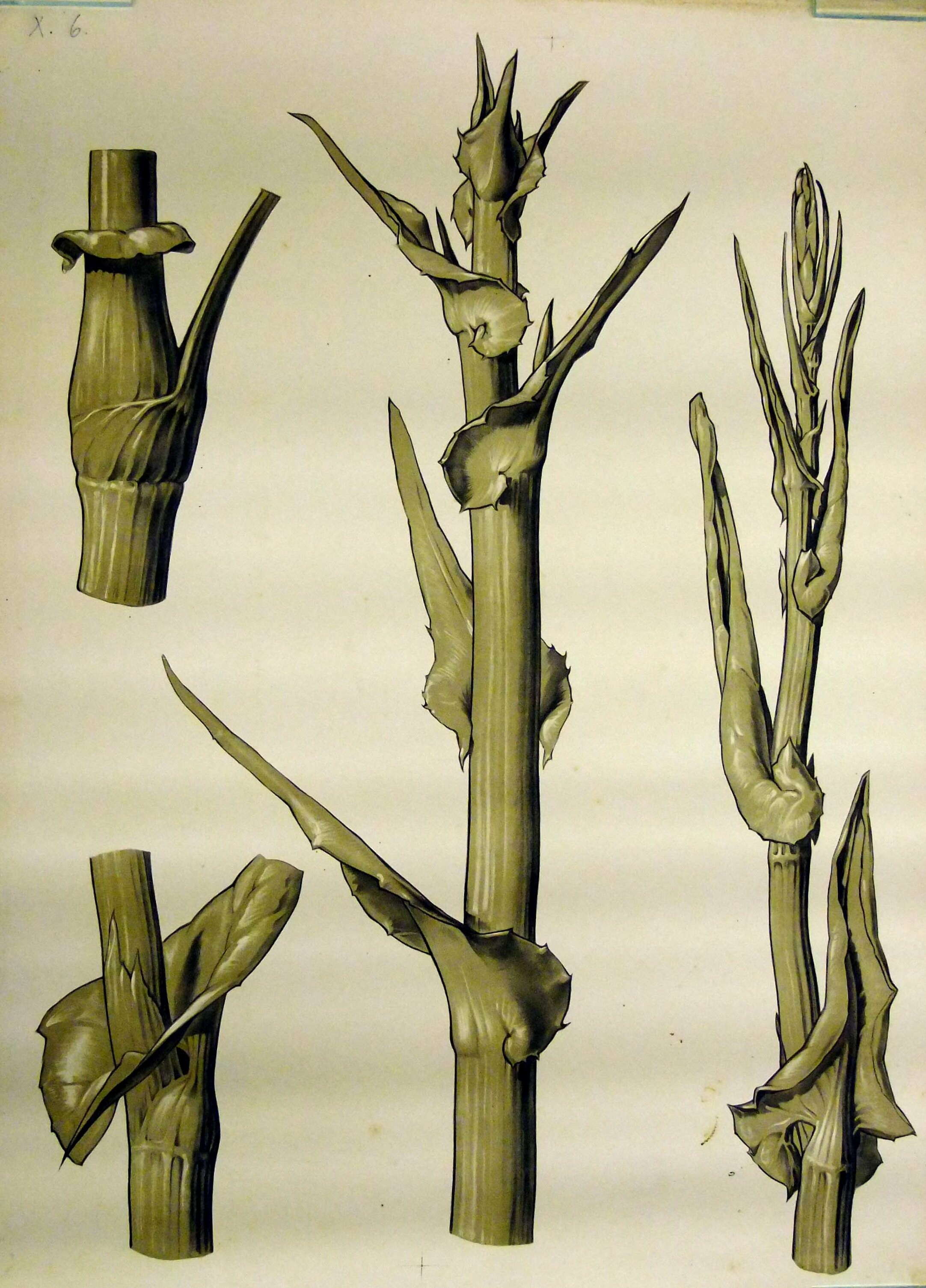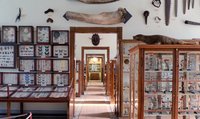Farbiger Druckentwurf in matten Grüntönen für eine Wandtafel als Lehrmittel. Das Blatt wurde in schwarz-weiß ebenfalls wiedergegeben in Meurers Publikation "Vergleichende Formenlehre des Ornamentes und der Pflanze" von 1909 unter der Abt. X., Taf. 6.
Dargestellt sind die Sprossen der Zichorie, Wegwarte (Cichorium), des Bleiwurz (Plumbago) und des Knöterich (Polygonum). Die hier erkennbaren Prinzipien der Verbindung zwischen Schaft und Blättern galten Meurer als Grundlage für die Ausbildung antiker Säulen. Analog zu den Pflanzen sind auch sie mittels Internodien (Knoten) und von Blattumfassungen gegliedert. Eine dazu ergänzende Tafel veröffentlichte Meurer im selben Werk unter der Abt. XXIV., Taf. 2.
en

